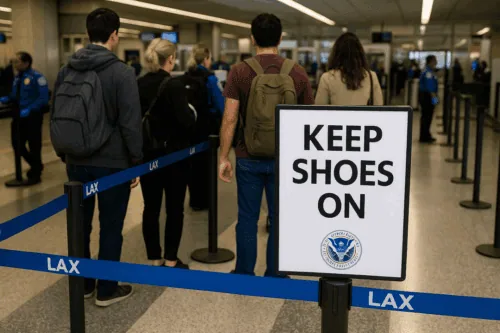Welcome to our guide on understanding and addressing unconscious bias. Whether you’re just starting your career journey or looking to make a positive change in your workplace, this guide is for you. Unconscious biases are the silent influencers of our thoughts and decisions, often without us even realizing it. They can shape how we view others, make decisions, and interact with the world. Yet, by becoming aware of these biases, we can take steps to mitigate their impact, promote diversity, and create more inclusive environments.
This guide is designed to help entry-level job seekers and those already in the workforce recognize common unconscious bias examples, understand their consequences, and learn strategies for overcoming them. As you navigate this guide, you’ll discover practical ways to challenge and change these hidden biases, fostering a culture of understanding and inclusion in your personal and professional life.
So, let’s begin this journey of exploration and empowerment together. Understanding unconscious bias can open doors to more diverse and equitable opportunities for all.
Understanding Unconscious Bias
Unconscious bias shapes our views without us knowing. It’s like an invisible force guiding our choices. These biases are rooted in our experiences and the world around us. They influence our decisions, often without our direct knowledge.
Firstly, let’s break down what unconscious bias is. It refers to the assumptions, beliefs, and attitudes we carry, unbeknownst to us. These can be about people’s race, gender, age, or other characteristics. It’s important to remember that everyone has biases. The key is recognizing and addressing them.
Here are some ways unconscious bias sneaks into daily life:
- Making snap judgments based on someone’s name or appearance.
- Associating certain jobs or roles with specific genders or ethnicities.
- Believing stereotypes without questioning their accuracy.
Unconscious biases can lead to unfair decision-making. For example, in hiring, they might cause us to favor candidates who are similar to us, known as affinity bias. Also, confirmation bias leads us to search for information supporting our beliefs.
Thankfully, many organizations are working to counteract these biases. Training on understanding unconscious bias is becoming more common. These programs aim to make us aware of our biases so that we can make more informed, fair decisions.
Organizations like Harvard University offer online tests for deeper insight into unconscious bias. These resources help individuals identify personal biases, a crucial step toward change.
Understanding and tackling unconscious bias is a journey, not a destination. It requires continuous effort, reflection, and action.
Common Unconscious Bias Examples in Daily Life
Every day, without realizing it, we encounter numerous examples of unconscious bias. These biases can shape our interactions, decisions, and perceptions in various aspects of life. Recognizing these examples is the first step toward addressing unconscious bias.
Education
Teachers might unknowingly favor students with similar backgrounds or interests in schools. This can affect classroom dynamics and student outcomes. Studies have shown that teachers’ expectations can influence student performance, creating a self-fulfilling prophecy.
Consumer Behavior
Our shopping habits also reveal unconscious biases. For instance, we might gravitate towards brands that align with our identity or values, often overlooking the quality or value of alternatives. This bias, known as brand bias, affects our purchasing decisions and how businesses market their products.
Media Consumption
The media we consume often reflects and reinforces our biases. For example, if we repeatedly see certain groups portrayed in negative contexts, we might unconsciously adopt these views. This is known as confirmation bias, where we seek information that aligns with our preconceived notions.
Healthcare
Unconscious bias in healthcare can lead to disparities in treatment and diagnosis. Patients from certain demographic groups might receive different levels of care due to the healthcare providers’ implicit biases. This can affect patient trust and health outcomes, highlighting the need for diversity and inclusion efforts in healthcare settings.
To combat unconscious bias, we must be aware of these common examples and reflect on how they may appear in our lives. Resources and training, like those offered in various sector-specific guides, can provide strategies for individuals and organizations to minimize the impact of these biases.
Unconscious Bias in the Workplace
Unconscious bias in the workplace can shape how jobs are advertised, who gets hired, and who gets promoted. At times, it affects decisions more than we realize. Here, we’ll explore examples and how to address them.
Hiring Decisions
Managers might lean towards candidates with familiar names or educational backgrounds when reviewing resumes. This is often unintended. Yet, it limits diversity. Tools like blind recruitment can help. They hide personal info, focusing on skills and experiences.
Performance Evaluations
At review times, unconscious bias might color the feedback. Employees from certain groups could be unfairly judged. For fairness, use clear, consistent criteria for all. This ensures reviews are based on achievements, not assumptions.
Team Dynamics
In team settings, some voices might be overlooked due to unconscious bias. Efforts to include all perspectives are vital. Promoting an open culture encourages everyone to contribute, enhancing innovation and problem-solving.
Addressing Unconscious Bias in the Workplace
First step: acknowledge it exists. Next, unconscious bias training should be provided for all employees. Learn more about improving workplace diversity. Also, establish mentorship programs. These pair diverse employees with leaders, fostering growth and understanding.
Always listen. Gather feedback on your diversity and inclusion efforts. Adjust as needed. This continual improvement shows a commitment to fairness for everyone.
Recognizing Unconscious Bias in Hiring Practices
Unconscious bias in hiring isn’t just about who gets the job. It’s about who even gets considered. Recognizing these biases can open doors for more diverse talents and ideas.
Job Descriptions
Job ads can unintentionally deter diverse applicants. For instance, using gender-charged words like “dominant” might attract more men. Instead, opt for neutral language. This small change can draw a wider pool of candidates.
Interview Processes
During interviews, unconscious bias examples pop up in questions posed or the assessments of responses. To avoid this, standardize interviews. Ask all candidates the same questions. This fairness helps in evaluating based on merit.
Assessing Qualifications
Qualification assessments often harbor unconscious biases. For example, you are valuing certain universities over others without considering the context. Broadening your understanding of qualifications can introduce you to outstanding talents from diverse backgrounds.
Solutions and Strategies
To counteract unconscious bias in hiring, consider implementing software that anonymizes applications. Also, diversify your hiring panels. Having varied perspectives in the room decreases the chance of unconscious bias affecting decisions.
Training on unconscious bias is crucial. It helps hiring teams recognize and minimize biases. Check out resources on how diversity improves teams for insights. Moreover, aim for transparency in your hiring criteria and process. This builds trust and ensures fair assessment for all candidates.
Counteracting Unconscious Bias with Training
Training plays a crucial role in fighting unconscious bias in any setting. It starts with awareness and leads to action. Here’s how to make it effective.
Starting With Awareness
First, we must understand what unconscious bias is. Workshops and seminars can highlight examples of common unconscious bias.
Incorporating Practical Exercises
Next, include exercises that mirror real-life scenarios. Role-playing and simulations can help. They let people practice responses in a controlled setting.
Encouraging Open Discussion
Training should foster an environment where participants feel safe to share experiences and ask questions. Open dialogue helps unearth biases we weren’t aware of. It also builds empathy among team members.
Reinforcing with Policies and Resources
Training must go hand-in-hand with policy changes. Provide resources for continuous learning. This could be access to articles, books, or online courses. For instance, learning about diversity’s impact on team success could broaden understanding.
Combating unconscious bias is ongoing. It doesn’t end with training. Continual effort and commitment to change are essential. This includes regular check-ins and updates on the topic.
Real-World Impacts of Unconscious Bias
The effects of unconscious bias extend far beyond personal feelings. They have tangible, lasting impacts on society. By understanding these impacts, we can better grasp the need for change.
In the Workplace
Unconscious bias can limit diversity in the workplace, stifling creativity and innovation. It can prevent the hiring of highly qualified candidates from varied backgrounds. Additionally, biased decision-making can lead to a lack of representation in leadership roles.
In Education
Students may face biases from educators that affect their academic journey. This can lead to achievement gaps among different student groups. Encouraging diverse teaching methods and inclusive curriculums can combat this.
In Healthcare
Unconscious bias in healthcare can lead to disparities in treatment and diagnosis. This affects patient trust and health outcomes, especially in marginalized communities. Awareness and training in diversity can improve patient care.
Beyond Individual Actions
Counteracting unconscious bias requires more than individual awareness; it needs systemic changes. This includes policies and practices that promote equality and inclusion at all levels of society. Ongoing education and dialogues are crucial.
For further reading, explore how examples of unconscious bias in sales jobs can influence customer relations and business success. Understanding these can provide insights into the broader implications of unconscious bias.
Steps to Overcome Personal Biases
Recognizing and overcoming personal unconscious biases is challenging but crucial for personal growth and societal progress. Here are actionable steps to embark on this journey.
Self-Reflection
Start with self-reflection. Identify moments when bias influences your decisions or interactions. Reflecting on why you might have these biases is the first step toward change.
Seek Diverse Perspectives
Actively seek out and listen to voices different from your own. This can mean reading books, watching films, or following media outlets representing various cultures and viewpoints.
Challenge Stereotypes
Whenever you catch yourself thinking in stereotypes, take a moment to challenge these thoughts. Ask yourself if there’s evidence to support these beliefs or if they’re merely assumptions.
Educate Yourself
Continuous learning is critical. Attend workshops, seminars, and training on diversity and inclusion. Websites of organizations like AACU offer valuable resources.
Ask for Feedback
Feedback from peers or mentors can provide insight into biases you may not have noticed. Be open to critique and willing to adjust your behaviors and attitudes.
Practice Mindfulness
Mindfulness practices can help you become more aware of your thoughts and feelings in the moment, making it easier to recognize and counteract biases as they arise.
Implementing these steps requires patience and dedication. It’s a continuous process, but each effort contributes to a more inclusive world.
FAQs
Here, we answer common questions about unconscious bias to deepen our understanding.
What is unconscious bias?
It’s the bias we aren’t aware of. It influences our decisions and the views of others.
Why is it essential to recognize unconscious bias?
Recognizing it helps us make fairer decisions and understand others better.
Can unconscious bias be eliminated?
Not entirely, but we can reduce its impact by being mindful and educated.
How does unconscious bias affect workplace diversity?
It can limit team diversity of thought, experience, and background.
What can organizations do to reduce unconscious bias?
Provide training, enforce diverse hiring practices, and promote an inclusive culture.
How can I check for my own unconscious biases?
Online tools like the Implicit Association Test (IAT) can offer insights.
Understanding unconscious bias is critical to creating a more inclusive world. By asking and answering these questions, we start necessary conversations. Each step forward is progress.
Conclusion
Unconscious bias affects us all, shaping our perceptions, decisions, and interactions with the world. Recognizing and addressing these biases is crucial for personal growth, fair decision-making, and creating inclusive environments where everyone feels valued and understood. The journey requires continuous effort, reflection, and learning, but the rewards – a more equitable and diverse society – are well worth it.
Diversity Employment is committed to fostering a supportive job board where diversity and inclusion are goals and realities. We offer resources, training, and opportunities to help individuals and organizations recognize and overcome unconscious biases. Start today. Join Diversity Employment and be part of the change you wish to see. We can make a difference, one unconscious bias at a time.




